CAMBRIDGE EDUCATION SYSTEM: MISSION, GOALS, IMPLEMENTATION

When it comes to the Cambridge Learning System, we probably think of a chapel of four steeples, a two-storey library with many wooden shelves and arched windows like those we remember from the Harry Potter books. The Cambridge Learning System do directly related to the Cambridge University. And we are going to cover how this relationship was built and what are its primary goals.
History
More than 160 years ago, the University of Cambridge created the Local Examinations Syndicate. It was intended to raise the level of education of the population by examining people who had not studied at university. Initially the examinations were organised in England, but starting from 1864 they hold the assessments internationally.
The Syndicate was the forerunner of today's Cambridge Assessment which has been functioning within three units since 1998:
1. Cambridge Assessment International Education/Cambridge International; it develops international education programmes for students aged 3 to 19.
2. Cambridge Assessment English which organizes English exams globally; and
3. Oxford, Cambridge and RSA Examinations (OCR); it holds exams, awards qualifications for students in England, Wales, and Northern Ireland.
In 2021, Cambridge Assessment united with Cambridge University Press to establish a new organisation called Cambridge University Press & Assessment. It undertakes world-leading academic research, organizes trainings and examination worldwide supported by first-class teaching and research units of the University of Cambridge.
For us, as far as the cross-cultural interaction in education is concerned, the Cambridge Assessment International Education is the most interesting. Let us look at its key features.
The Cambridge System - Focus and Goals
The mission of Cambridge Assessment International Education is about brining up a globally minded person who has the skills to set clear goals, is academically well-rounded and equipped to engage socially on an international scale.
This mission defines the aims of the Cambridge Learning System as follows:
♦ Building cross-cultural skills. This refers not only to knowledge of English at a native speaker level (C2), but also to awareness of the economic, political, social, and cultural differences between countries. A learner developed in accordance to the Cambridge System is one who embraces differences between peoples and is ready for constructive international cooperation.
♦ Creating a basis for continuous learning for students. The aim of a teacher who uses the Cambridge System is to show his or her students the importance of self-improvement and to unleash their potential.
♦ Introducing the students to the system of coordinates with built-in humanistic values. What is most relevant in today's world is openness, mutual respect, honesty, and freedom of opinion. This is all about taking responsibility for oneself and one's actions.
♦ Showing students the importance of modern technology and global movements. The modern world without IT is hard to imagine but it is impossible without a focus on sustainability.
The Cambridge System - Levels of Education
Being a part of the University of Cambridge, Cambridge Assessment International Education works extensively with its other divisions, such as Faculty of Education, and also draws on the expertise of Cambridge Mathematics to develop curricula in the relevant area of education.
Additionally, Cambridge International together with Cambridge CEM develops a standard for international education. It is based on the levels of education from pre-school to high-school training. Furthermore, each educational institution can shape its own curriculum with respect to the cultural specificities of particular regions
The Cambridge System and International Community
The system exists in schools in over 160 countries in regions such as Eastern Europe, Latin America, the Middle East and North Africa, South East Asia, and the Pacific. Cambridge Assessment International Education is also being developed in Russia at the Cambridge International School (the School), with branches in Moscow and St. Petersburg.
The specifics of the education and training of students in Russia have incorporated the social and cultural message from the mission of the Cambridge Learning System. The goals of the system are reflected in the curricula of the School. Furthermore, the students also can study upon the national curriculum and obtain a Russian full secondary school education certificate.
The secondary education in Russia is designed for 3 to 18 year olds which is another difference from Cambridge Assessment where the program for up to 19 year olds is considered a standard.
Summing Up
The Cambridge Learning System is well structured and organises the educational process in levels as part of the learner's all-round development. The intensive study of foreign languages, technical disciplines, humanities, and sciences with respect to the specific region culture helps to develop a unique world view of the students. As a result, self-confidence, desire to discover their own potential, passion for learning, willingness to succeed and to improve the environment become their key qualities.
The Cambridge System, with its international presence history of more than two decades, looks set to grow. The global technology integration trends and the need for cross-national interaction are the key contributors here. Ultimately, the Cambridge Learning System is designed to bring up a person who is spiritually attuned to harmonious self-knowledge and understanding the world order of the society both of which are essential in modern realities.



